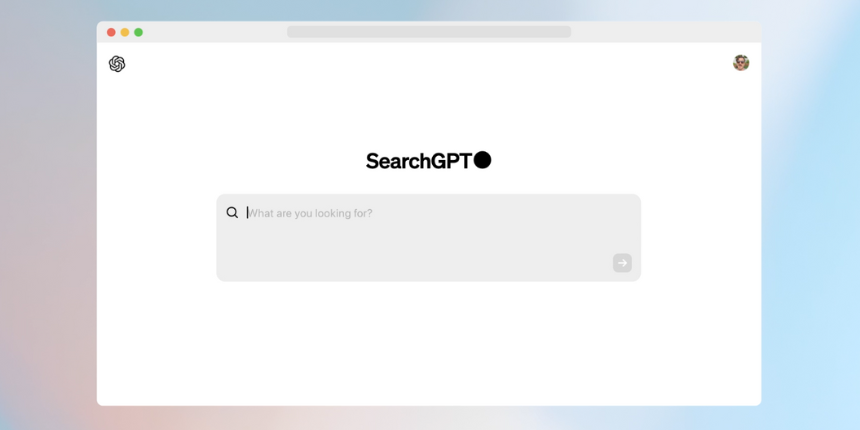The DAC Blog
Stay informed with actionable insights, expert strategies, and innovative ideas to drive your marketing success
Stay informed with actionable insights, expert strategies, and innovative ideas to drive your marketing success

The evolution of search technology has taken an exciting leap forward with the introduction of ChatGPT’s latest feature: SearchGPT. Designed to transform how users search, SearchGPT offers a conversational, context-driven experience that redefines how queries are refined and explored. By maintaining the context of searches across a session, it promises an intuitive alternative to the linear query model of traditional search engines. Robert Cooney, Vice-President of Strategy at DAC, has been testing SearchGPT to understand its capabilities and limitations. Based on his observations, this feature introduces innovative tools for dynamic searches but also highlights key areas where traditional search engines, such as Google, retain an advantage. In this blog, Robert explores where SearchGPT excels, its current gaps, and how it compares to competitors in an evolving search landscape. 1 – Where SearchGPT Shines: A Closer Look at Its Strengths While SearchGPT may not be the first AI tool on the market to enable search, it introduces a unique approach that prioritizes context and conversational depth. One of its most impressive features is the ability to preserve the context of a search session. This allows users to refine queries, explore related topics, and issue follow-up instructions without having to start from scratch. For example, users can build on an existing search by specifying a location or other contextual details without needing to restart the process. Imagine you’re searching for a car wash. You start by asking, “Where can I find a car wash near me?” Then, you refine your search with, “What are the highest-rated options with eco-friendly services?” Later, you follow up with, “Is there anything close to DAC?” SearchGPT preserves the context of your previous queries, enabling you to seamlessly build on your research without repeating the same details, making the process smooth and efficient. For tasks that require discovery, learning, or multi-step research, this approach delivers a smoother and more intuitive experience than traditional search engines. Another area where SearchGPT stands out in branded searches. SearchGPT has thes ability to providestructured overviews of service providers and their major offerings, providing clarity without forcing users to sift through multiple links. It can surface specific product inventories, providing additional details such as safety notices or recall information, helping users navigate broad product categories or services with clarity, resulting in a richer experience and a personalized result. Its conversational framework shines in handling complex queries. Users can interact dynamically, refining searches in real-time or exploring multiple layers of information. This iterative process fosters depth and personalization, making SearchGPT particularly effective for research-heavy scenarios. While not a replacement for traditional search engines, it offers a compelling alternative for specific use cases, paving the way for more discovery-focused interactions. 2- SearchGPT’s Limitations: Where Traditional Engines Still Lead Despite introducing innovative features, SearchGPT haslimitations where traditional search engines continue to excel. One notable limitation is its speed. ChatGPT can feel slower compared to the near-instant results of traditional search engines like Google, especially for quick, navigational queries like accessing a website or product page. Local search is another area where SearchGPT falls short. For instance, while it can indicate that a business has reviews, it doesn’t allow users to access them directly. To learn more about the reviews of a business, users must request additional details, adding unnecessary steps. Additionally, in local search results, appearing in the #1 position is critical, as it is often the only listing visible without scrolling on SearchGPT. This visibility advantage, coupled with Google’s seamless integration of user-generated content, makes traditional engines far more intuitive and effective for users seeking granular information. SearchGPT also struggles with commercial intent. Unlike Google’s ad system or Perplexity AI’s newly launched ad capabilities, which allow businesses to feature targeted results, SearchGPT lacks a similar system. This absence limits its effectiveness for users looking to take immediate action, such as purchasing or booking a service. However, future updates could unlock opportunities for monetization, enhancing its competitiveness in transactional searches. While SearchGPT’s conversational framework enables dynamic exploration, it can feel restrictive for users accustomed to immediate access to detailed information. These challenges suggest that SearchGPT is best positioned as a complementary tool for certain scenarios, with room to grow in usability. Conclusion: SearchGPT and the Future of Search SearchGPT is not just another search tool; it’s a glimpse into the future of how we interact with digital information. By introducing a conversational, context-driven framework, it challenges traditional search methods and redefines how users discover, refine, and engage with content. This approach opens doors to more dynamic and personalized search experiences that could reshape the industry. While it has gaps in speed, local search capabilities, and commercialization, SearchGPT excels in scenarios that prioritize depth and exploration, positioning it as a valuable complement to traditional search engines. As search technology evolves, innovations like SearchGPT push boundaries and inspire new ways to think about discovery and interaction. If you’d like to explore how these developments might impact your business, we’d be happy to connect—reach out to start the conversation. GET IN TOUCH
Subscribe to our monthly newsletter.
Discover expert perspectives and actionable ideas to optimize your marketing strategy today.
Subscribe to our monthly newsletter.